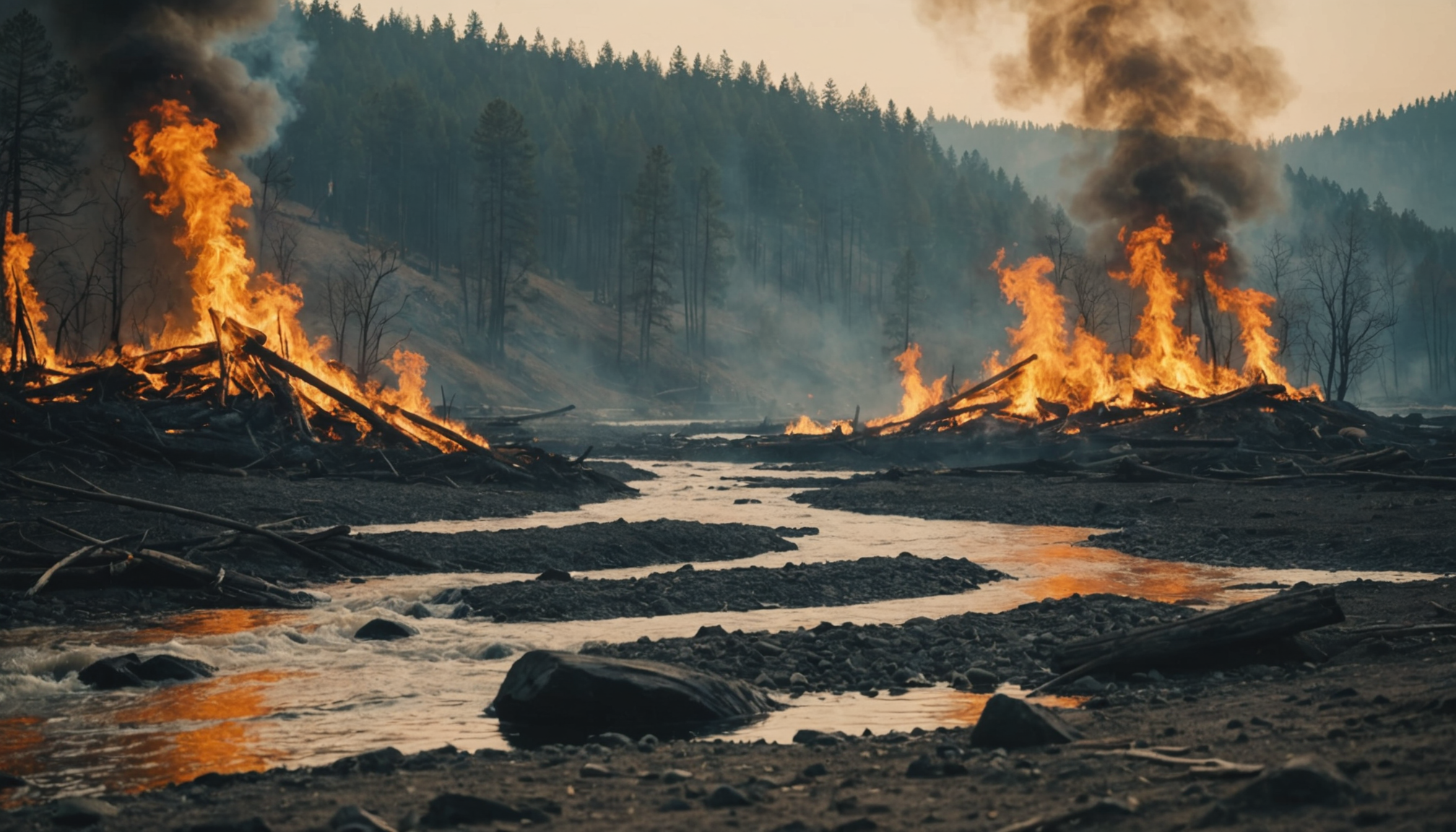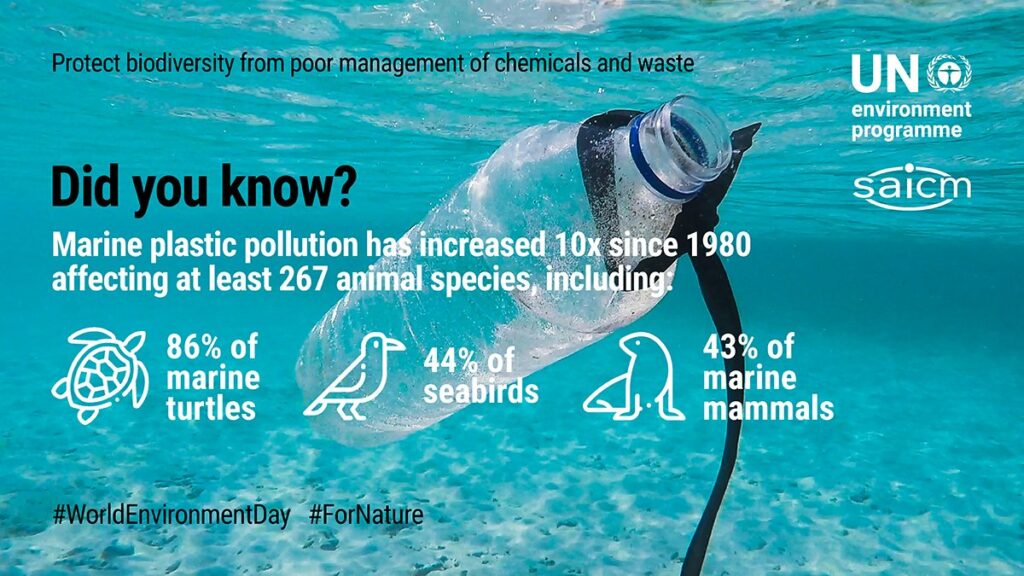
Impact of Wildfires on Water Quality in the Western U.S.: A Comprehensive Study Aligned with Sustainable Development Goals
Introduction
Years after wildfires devastate forests and watersheds, contaminants continue to impair rivers and streams across the Western United States for much longer than previously estimated. This ongoing environmental challenge directly relates to several Sustainable Development Goals (SDGs), including SDG 6 (Clean Water and Sanitation), SDG 13 (Climate Action), and SDG 15 (Life on Land).
Study Overview
Published on June 23 in Nature Communications Earth & Environment, a new large-scale study analyzed water quality in over 500 watersheds across the Western U.S. This research represents the first extensive assessment of post-wildfire water quality at a continental scale.
- Lead institution: Cooperative Institute for Research in Environmental Science (CIRES), University of Colorado Boulder
- Lead author: Carli Brucker, former CU Boulder and Western Water Assessment PhD student
- Principal investigator: Ben Livneh, CIRES Fellow and Western Water Assessment Director
Research Objectives and Methodology
The study aimed to identify significant trends in water quality following wildfires to inform water management strategies and enhance resilience against wildfire impacts, supporting SDG 6 and SDG 13.
- Collection of over 100,000 water samples from 500 sites, split evenly between burned and unburned river basins.
- Measurement of key water quality indicators: organic carbon, nitrogen, phosphorus, sediment, and turbidity.
- Development of data-driven models to quantify contaminant changes before and after wildfires.
- Comparison of average contaminant levels across burned and unburned basins over multiple years post-fire.
Key Findings
- Contaminants such as organic carbon, phosphorus, nitrogen, and sediment degrade water quality for up to eight years post-wildfire.
- Organic carbon, phosphorus, and turbidity levels remain significantly elevated for one to five years after fires.
- Nitrogen and sediment concentrations show significant increases lasting up to eight years.
- Fire-driven water quality impacts are more severe in heavily forested areas.
- Variability in watershed response is influenced by factors such as fire proximity to rivers, soil types, vegetation, and weather conditions.
Implications for Water Management and Sustainable Development
The prolonged contamination of water sources post-wildfire presents challenges to achieving SDG 6 (Clean Water and Sanitation) by threatening safe and sustainable water supplies. The study’s findings emphasize the need for improved water management strategies that incorporate wildfire resilience, aligning with SDG 13 (Climate Action) and SDG 15 (Life on Land).
- Water managers can utilize the concrete contaminant data to plan effective responses and resilience improvements.
- Understanding delayed and variable contaminant effects supports adaptive management approaches.
- Enhanced planning based on this research can contribute to protecting aquatic ecosystems and biodiversity.
Conclusion
This study provides critical, data-driven insights into the long-term impacts of wildfires on water quality across the Western U.S., addressing a significant gap in continental-scale water quality assessments. By informing water management and resilience planning, the research supports the achievement of multiple Sustainable Development Goals, particularly SDG 6, SDG 13, and SDG 15.
As Carli Brucker stated, providing concrete numbers is essential for funding and implementing resilience improvements, ensuring sustainable water resources for communities and ecosystems affected by wildfires.
1. Sustainable Development Goals (SDGs) Addressed or Connected
- SDG 6: Clean Water and Sanitation
- The article focuses on water quality degradation caused by wildfires, directly impacting the availability of clean water in watersheds across the Western U.S.
- SDG 13: Climate Action
- The study relates to wildfire impacts, which are influenced by climate change, highlighting the need for climate resilience and adaptation strategies.
- SDG 15: Life on Land
- Wildfires affect forests and watersheds, ecosystems critical to terrestrial biodiversity and land health.
2. Specific Targets Under Those SDGs Identified
- SDG 6: Clean Water and Sanitation
- Target 6.3: By 2030, improve water quality by reducing pollution, minimizing release of hazardous chemicals and materials, halving the proportion of untreated wastewater, and substantially increasing recycling and safe reuse globally.
- Target 6.5: Implement integrated water resources management at all levels, including transboundary cooperation as appropriate.
- SDG 13: Climate Action
- Target 13.1: Strengthen resilience and adaptive capacity to climate-related hazards and natural disasters in all countries.
- SDG 15: Life on Land
- Target 15.2: Promote the implementation of sustainable management of all types of forests, halt deforestation, restore degraded forests, and substantially increase afforestation and reforestation globally.
3. Indicators Mentioned or Implied to Measure Progress
- Water Quality Indicators (SDG 6.3)
- Levels of organic carbon, phosphorus, nitrogen, and sediment in water samples.
- Turbidity (cloudiness) of water samples.
- Duration of elevated contaminant levels post-wildfire (up to eight years).
- Resilience and Adaptive Capacity Indicators (SDG 13.1)
- Data-driven models measuring changes in contaminant levels before and after wildfires to inform water management strategies.
- Variability in sedimentation rates and contaminant mobilization following wildfire and storm events.
- Forest Management and Restoration Indicators (SDG 15.2)
- Extent and severity of wildfires impacting forested watersheds.
- Recovery time of watersheds and forests post-wildfire.
4. Table of SDGs, Targets, and Indicators
| SDGs | Targets | Indicators |
|---|---|---|
| SDG 6: Clean Water and Sanitation |
|
|
| SDG 13: Climate Action |
|
|
| SDG 15: Life on Land |
|
|
Source: sciencedaily.com







